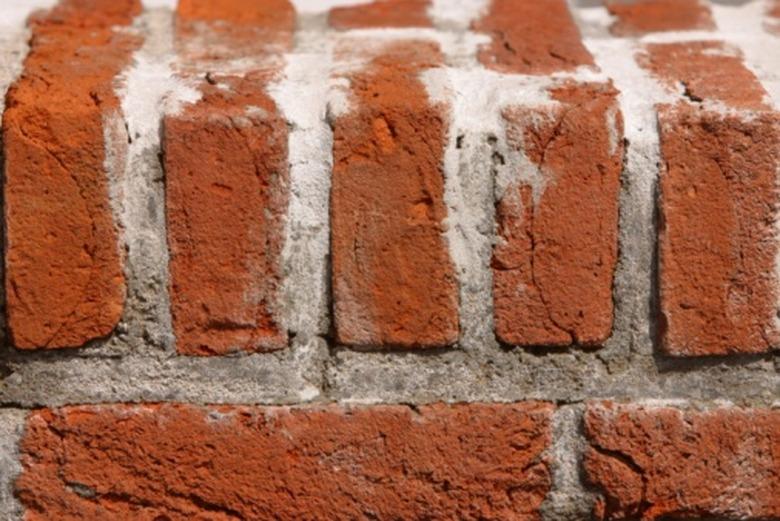Difference Between Mortar & Parging Cement
Building or renovating structures made of bricks or blocks requires an understanding of the differences between mortar and cement parging. Many construction applications may require both cement parging or and mortar. However, one product acts a bonding agent and he other product may improve the way a structure looks. Using the wrong product may require repeating the construction process to correct any problems.
Purpose
You use mortar when constructing, renovating or repairing structures made of blocks, bricks or stones. You use paging cement when improving a structure's appearance or saving a structure. Unlike mortar, parging isn't a requirement when building a structure, but an option. For example, according to King Products, concrete blocks and poured concrete walls are normally a rough texture and require parging to provide a smooth appearance.
Function
Parging cement serves two functions. Adding parging cement may enhance the block or cement structure's look. It is often added to a building's foundation or to a column to create a decorative effect. Its application also serves as a way to keep failing mortar strong. Mortar functions as a stuffing or gap filler. When applying mortar, you place the mixture onto a trowel and on the sides of the blocks and along the row of blocks. Then you sit the bricks or blocks next each other. Mortar acts as the filler between blocks, hardening or cementing the objects permanently together. It is what holds structures vertical.
Appearance
Mortar mixture consists of lime, sand and cement. The ingredients are a powdered mix until you add water. When mixed correctly—with the proper amount of water—the mortar mixture becomes a paste. The product must be a paste to hold a shape in between the blocks. Parging cement consists of sand and Portland cement, sometimes called a sand mix. The mix becomes a sticky substance when you add water. The product's consistency must be sticky so it solidifies onto a vertical structure without sliding down.
Considerations
A person shouldn't substitute mortar for sand mix when preparing parging cement. Mortar may stick to the blocks or concrete structure after drying; however, over time it crumbles, falling off the structure. You will have to repeat the parging cement process again using the correct material. In addition, before applying water to either mortar or sand mix, start with a small amount of water and build up to the consistency needed.
